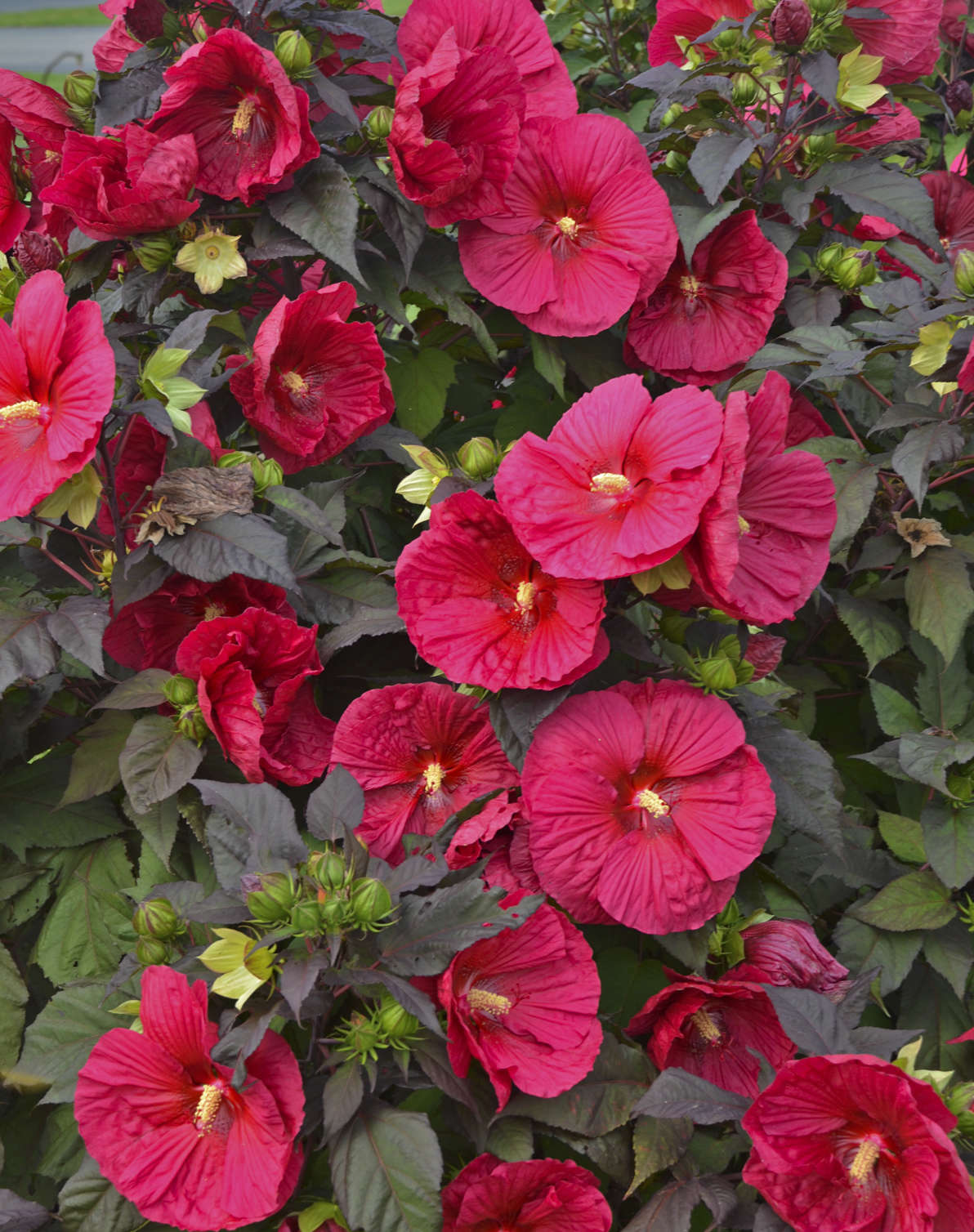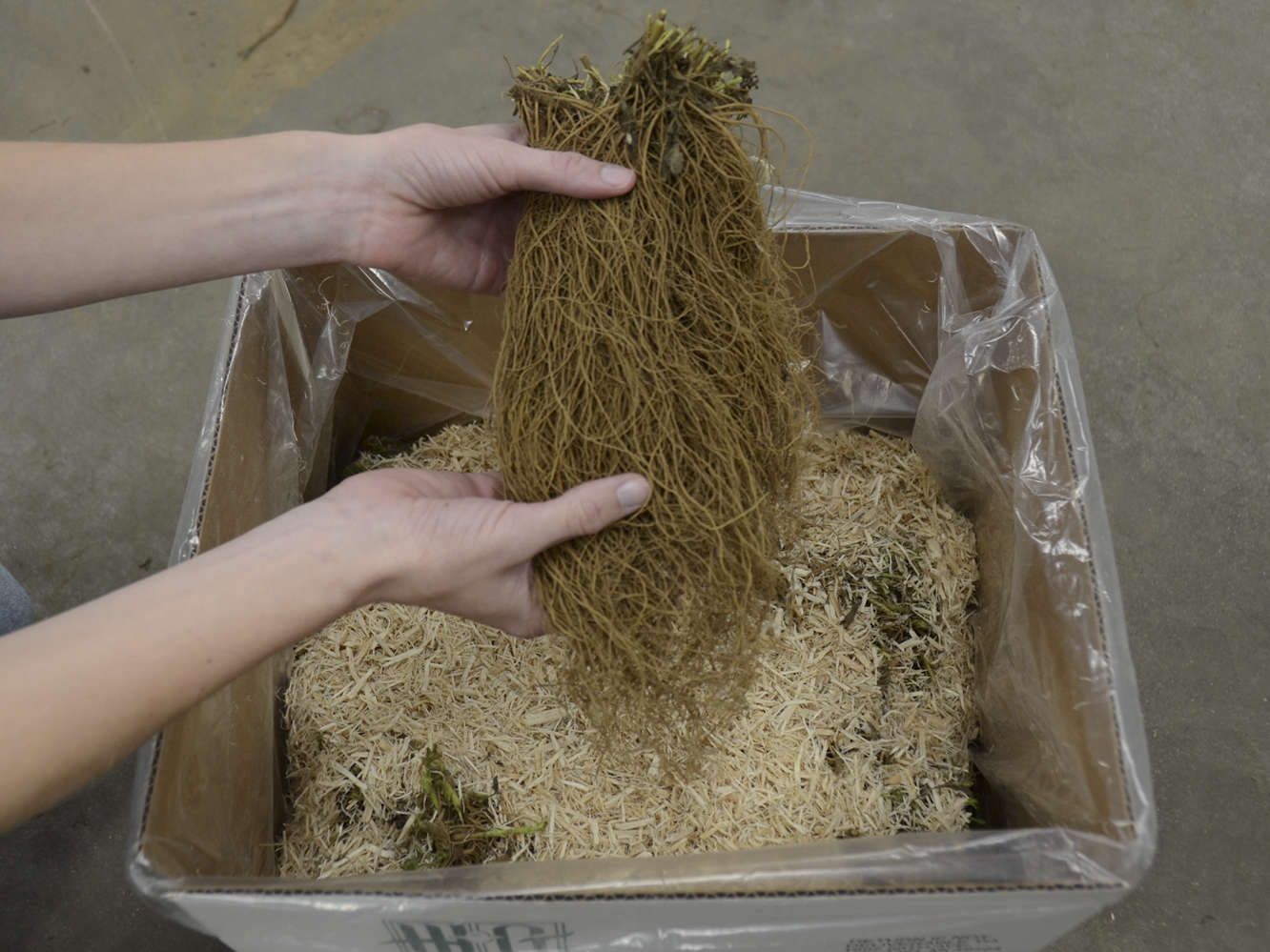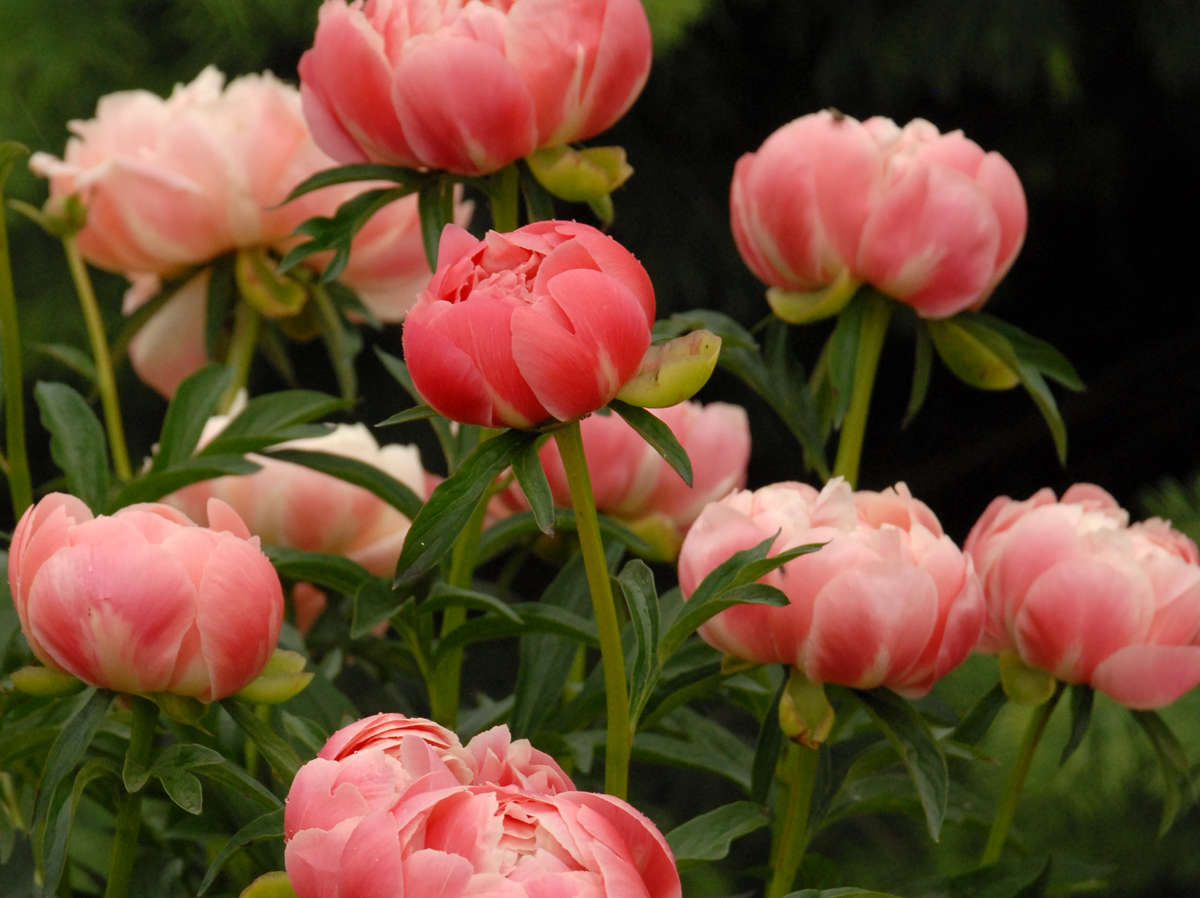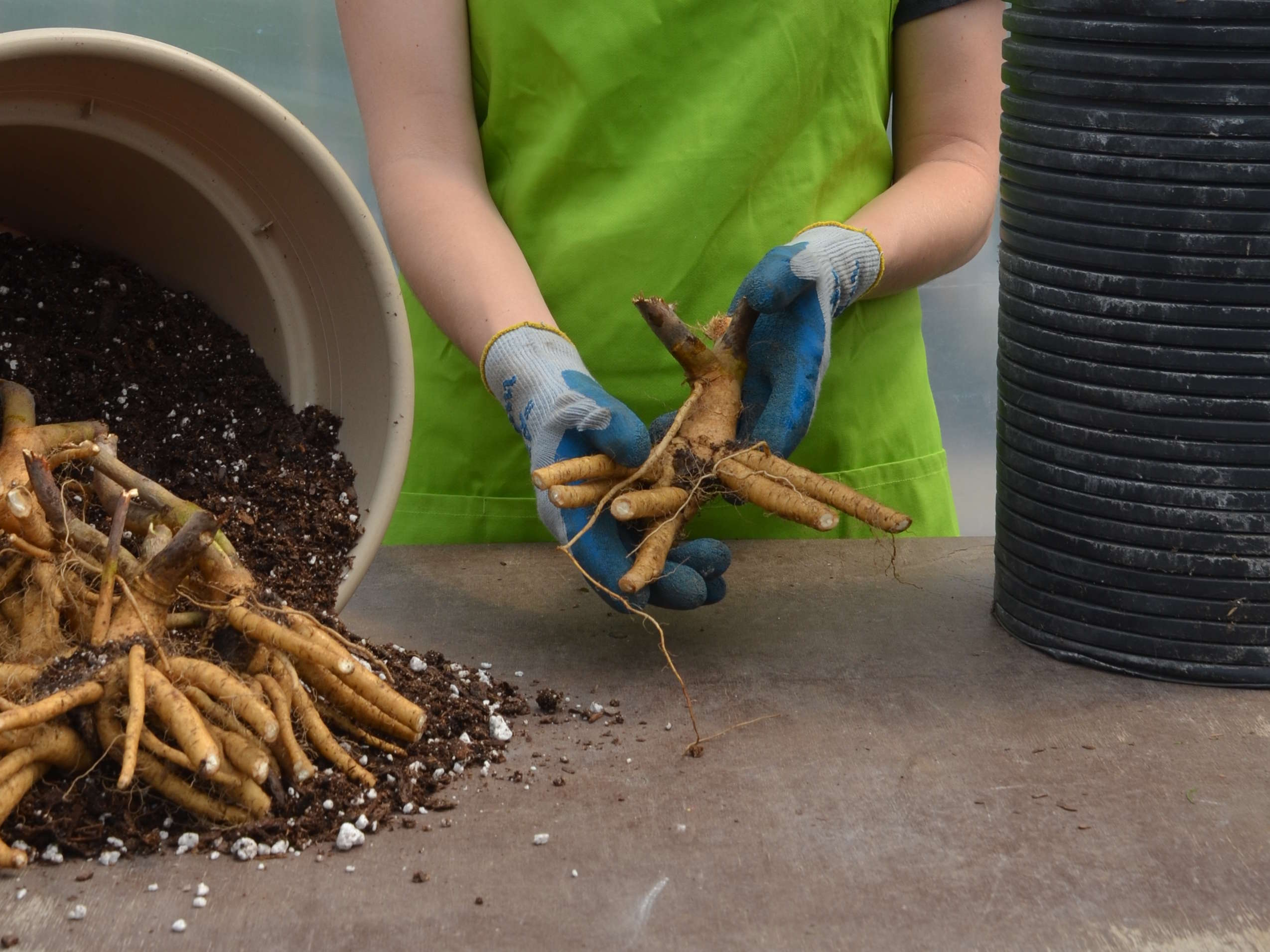Succeeding with Bare Root Hibiscus
09/19/2012
Bare root Hibiscus are very large and require at least a 2-3gal size container for finishing. This root has been trimmed down as far as possible without effecting growth and flowering performance.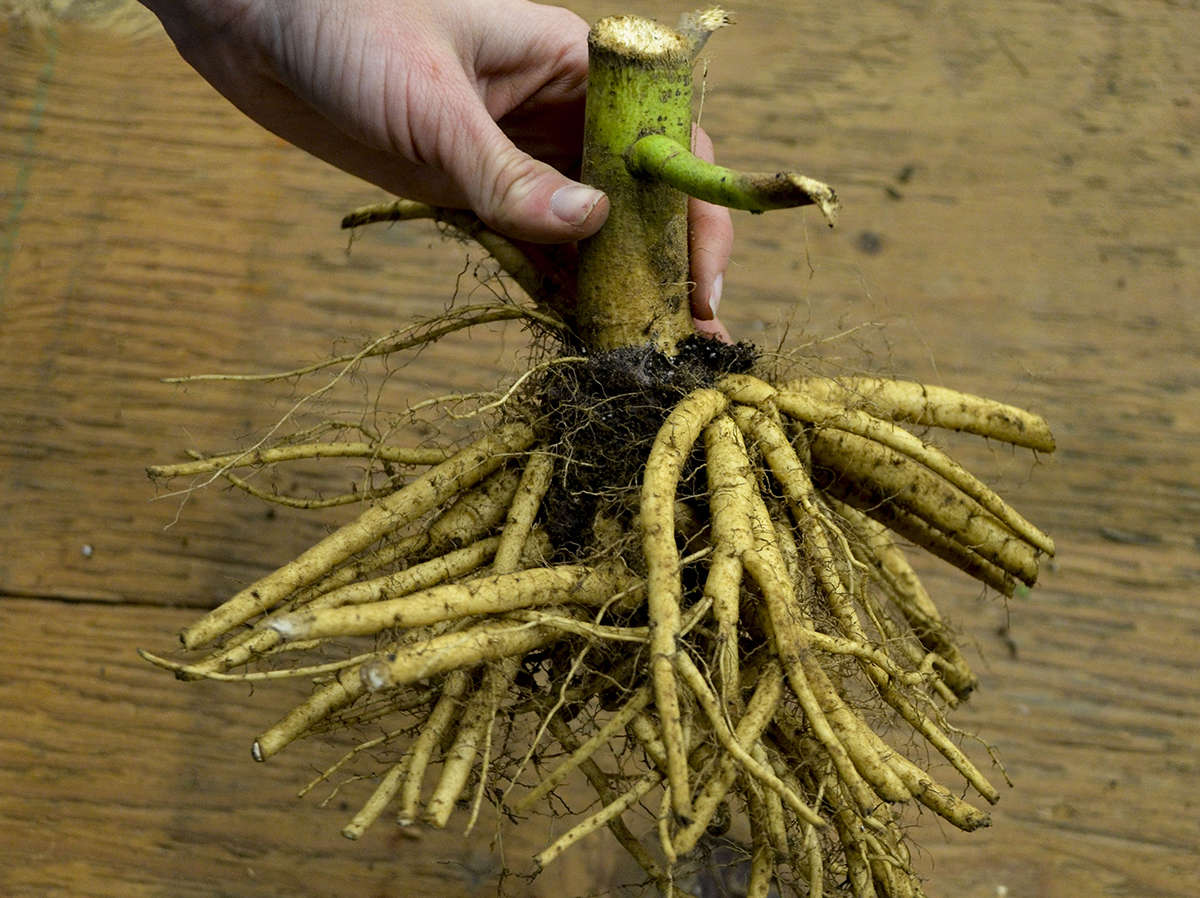
Hardy Hibiscus continues to be a popular perennial grown for summer sales. A few years ago, Walters Gardens, Inc. began to offer bare root starting materials of Hibiscus to the industry. Although bare root Hibiscus offers numerous benefits, many growers are not familiar with this type of starting material.
Bare root Hibiscus are field grown and offer growers a much larger, more vigorous starter plant compared to the much smaller liners typically used in the past. This leads to faster turnaround times, fuller containers with more flowers per pot, and very high perceived quality.
Flowering Characteristics
Besides the benefits of using bare root plants, growers should consider the type of flowering each cultivar offers as not all Hibiscus are created equal. There are two types of flowering habits: ‘determinate’ and ‘indeterminate’. Cultivars with ‘determinate’ flowering develop flower buds near the terminal shoot and ‘indeterminate’ varieties develop flower buds at the nodes along much of the stem as well as near the terminal shoots. Therefore, ‘indeterminate’ cultivars produce more flowers and bloom considerably longer than ‘determinate’ varieties.
Most of the older genetics on the market are ‘determinate’ bloomers with flowers lasting for approximately one month during the summer. All of the new Walters Gardens introductions are ‘indeterminate’ bloomers and flower consistently for 2 to 3 months or even longer.
Production Guidelines
Upon receipt, bare root Hibiscus will often have large root systems that may be too large to fit in the container they are going to be grown in. Hibiscus from bare root is most suitable for production in two gallon or larger containers. If the roots are too large to fit into the container they are to be grown in, the roots can be trimmed to a 3-4 inch radius or 6 to 8 inches in total width. When potting, plant the crown of the plant so that it is just slightly below the media surface.
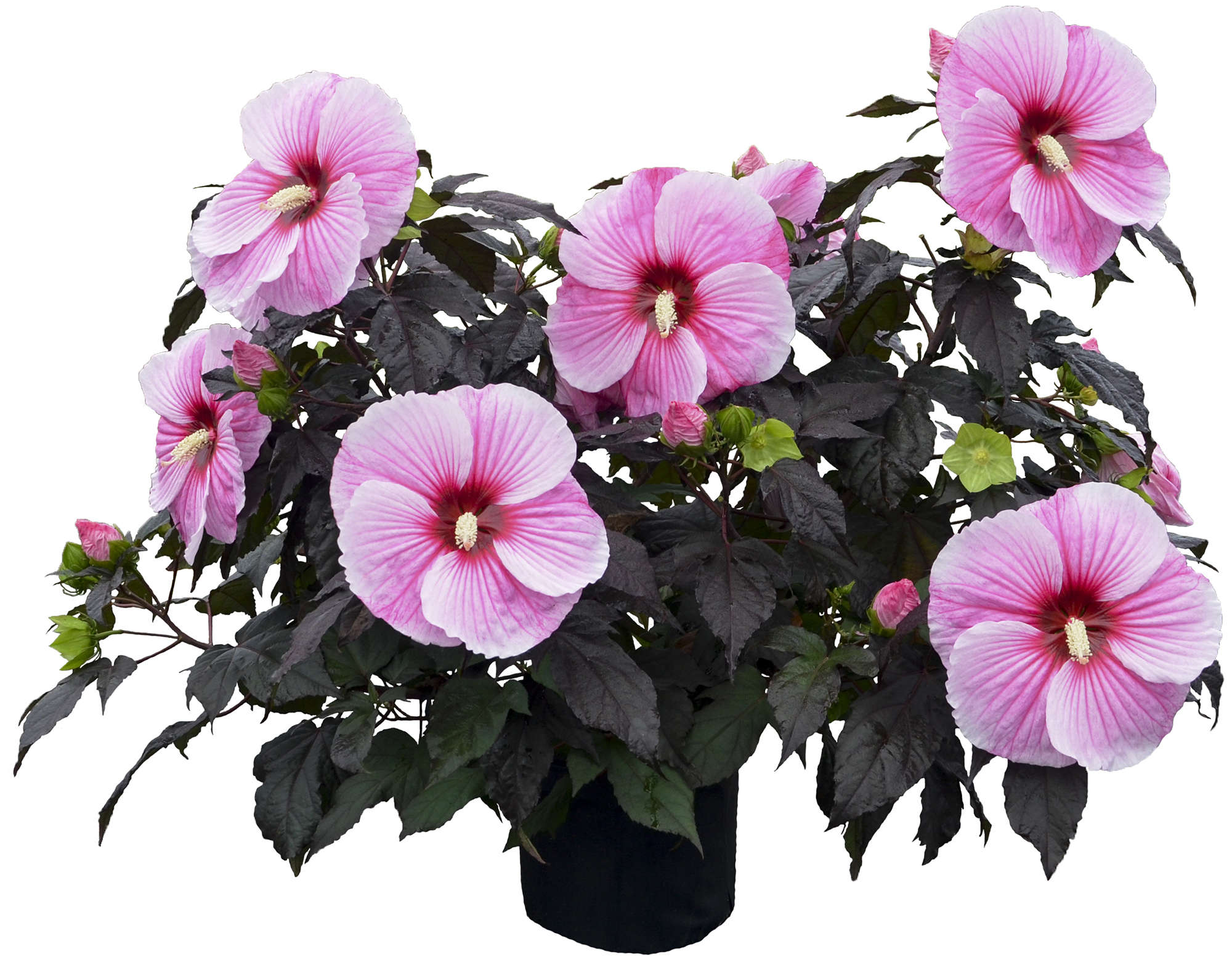
A beautifully finished Hibiscus 'Starry Starry Night' flowering the first year from bare root in a 3-gal container.
Bare root Hibiscus prefer to be kept consistently moist (not overly wet or overly dry) during production. Never allow them to wilt as the plants may experience lower leaf yellowing and/or flower bud abortion is likely to occur. Due to their vigorous growing habit, Hibiscus require ample amounts of nutrients; provide 150 to 200 ppm nitrogen with every irrigation or incorporate a medium rate of a reliable controlled release fertilizer formulation at potting. The acceptable pH range is 6.0 to 6.5. Grow Hibiscus outside in full sun or in greenhouses with high light intensities.
One of the keys to successful production is to grow Hibiscus warm. They do not grow well with cool temperatures. When the temperatures are below 60 to 65° F, the plants grow slowly and may appear chlorotic. The best growth and development occurs with day temperatures above 70° F and night temperatures above 68° F. Hibiscus require long days for flowering.
Allow 12 to 14 weeks from planting to flower for two gallon crops that have been pinched once early in production when grown at the temperatures described above. For crops that have been pinched on multiple occasions allow approximately 6 weeks from the time of the last pinch for them to reach flowering.
It may be necessary to control plant height using plant growth regulators during production. If height control is necessary, spray applications of 5 ppm uniconazole (Concise, Sumagic), 45 ppm paclobutrazol (Bonzi, Paczol, Piccolo), or the tank mixture of 3750 ppm daminozide (B-Nine, Dazide) and chlormequat chloride (Cycocel, Citadel) can be applied. It is best to begin PGR applications about 3 to 5 days following a pinch and reapplying them as necessary at 7 day intervals.
The most common pests to attack hardy Hibiscus are Japanese beetles, spider mites, and whiteflies. The occurrence of plant diseases is fairly rare. Growers should have routine scouting programs in place to help detect the presence of pests and diseases early and determine if control strategies are necessary.
Conclusions
With their brilliant and impressive flower displays, hardy Hibiscus provides great appeal and presence in garden centers and summer landscapes. With improved plant appearance and flowering characteristics through their breeding efforts, Walters Gardens continues to provide value in their genetics. Additionally, the many benefits including improved final plant quality and reduced production time using Walters Gardens bareroot Hibiscus make hardy Hibiscus a cost effective option for summer programs.
Paul Pilon is a horticultural consultant, owner of Perennial Solutions Consulting (www.perennialsolutions.com) and author of Perennial Solutions: A Grower’s Guide to Perennial Production. He can be reached at paul@perennialsolutions.com or (616) 366-8588.
